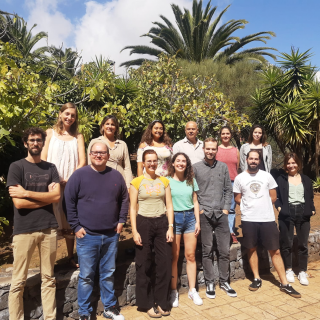Bibcode
Domínguez-Gómez, Jesús; Pérez, Isabel; Ruiz-Lara, Tomás; Peletier, Reynier F.; Sánchez-Blázquez, Patricia; Lisenfeld, Ute; Falcón-Barroso, Jesús; Alcázar-Laynez, Manuel; Argudo-Fernández, María; Blázquez-Calero, Guillermo; Courtois, Hélène; Duarte Puertas, Salvador; Espada, Daniel; Florido, Estrella; García-Benito, Rubén; Jiménez, Andoni; Kreckel, Kathryn; Relaño, Mónica; Sánchez-Menguiano, Laura; van der Hulst, Thijs; van de Weygaert, Rien; Verley, Simon; Zurita, Almudena
Bibliographical reference
Nature
Advertised on:
7
2023
Journal
Citations
37
Refereed citations
29
Description
Galaxies in the Universe are distributed in a web-like structure characterized by different large-scale environments: dense clusters, elongated filaments, sheetlike walls and under-dense regions, called voids1-5. The low density in voids is expected to affect the properties of their galaxies. Indeed, previous studies6-14 have shown that galaxies in voids are, on average, bluer and less massive, and have later morphologies and higher current star formation rates than galaxies in denser large-scale environments. However, it has never been observationally proved that the star formation histories (SFHs) in voids are substantially different from those in filaments, walls and clusters. Here we show that void galaxies have had, on average, slower SFHs than galaxies in denser large-scale environments. We also find two main SFH types present in all the environments: `short-timescale' galaxies are not affected by their large-scale environment at early times but only later in their lives; `long-timescale' galaxies have been continuously affected by their environment and stellar mass. Both types have evolved more slowly in voids than in filaments, walls and clusters.
Related projects

Traces of Galaxy Formation: Stellar populations, Dynamics and Morphology
We are a large, diverse, and very active research group aiming to provide a comprehensive picture for the formation of galaxies in the Universe. Rooted in detailed stellar population analysis, we are constantly exploring and developing new tools and ideas to understand how galaxies came to be what we now observe.
Anna
Ferré Mateu